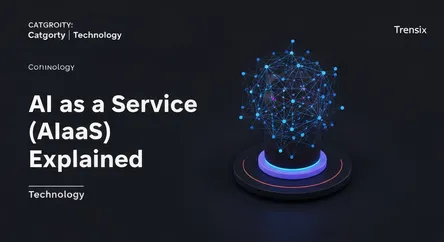Technology
AI as a Service (AIaaS) Explained

Discover AI as a Service (AIaaS), the cloud solution letting businesses use powerful AI tools without the high cost of in-house development.
What is it?
AI as a Service (AIaaS) refers to third-party offerings of artificial intelligence outsourcing. It allows individuals and companies to leverage AI for various purposes without incurring the large initial investment of building and managing their own in-house AI platforms. Major cloud providers like Amazon Web Services (AWS), Google Cloud, and Microsoft Azure offer a wide range of AIaaS tools, including pre-built machine learning models, APIs for natural language processing, computer vision, and chatbot frameworks. This model essentially makes AI accessible on a subscription or pay-as-you-go basis, much like Software as a Service (SaaS).
Why is it trending?
AIaaS is trending because it significantly lowers the barrier to entry for adopting artificial intelligence. Businesses no longer need to hire teams of specialized data scientists or invest in expensive, high-performance computing infrastructure. This democratization of AI allows companies of all sizes to experiment with and deploy AI solutions quickly and cost-effectively. The ability to scale services up or down based on demand provides immense flexibility, fueling innovation and enabling companies to integrate intelligent features into their products and operations much faster than before.
How does it affect people?
For businesses, AIaaS provides a competitive edge by enabling enhanced data analysis, process automation, and personalized customer experiences. For consumers, the impact is already widespread. It powers the recommendation engines on streaming platforms, the functionality of smart assistants like Siri and Alexa, the chatbots that provide instant customer support, and the fraud detection systems that protect financial transactions. By making sophisticated AI tools more accessible, AIaaS is accelerating the integration of intelligent technology into the everyday products and services we use, making them more efficient, intuitive, and helpful.